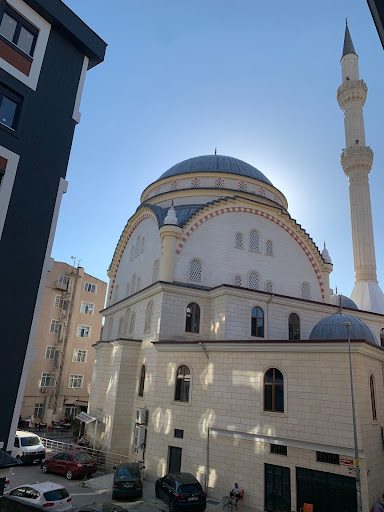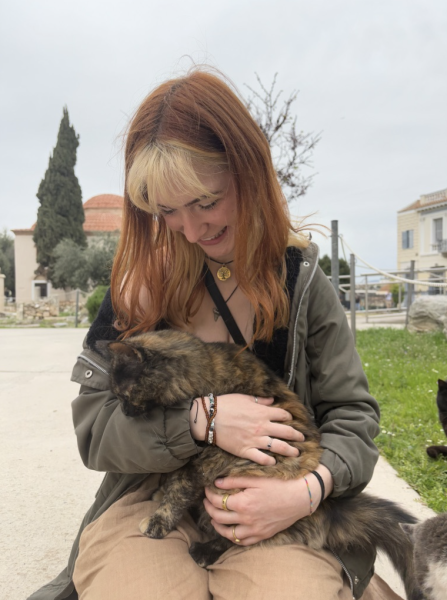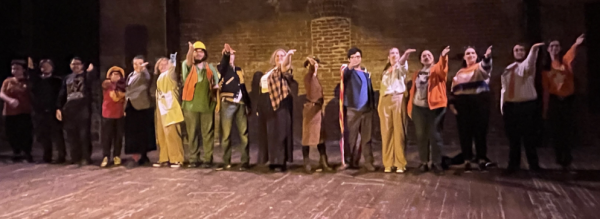The Earthquake in Turkey and Syria Shook My World

Şanlıurfa – Southeastern Turkey (one of the 11 cities in Turkey affected by the earthquake), Photo Courtesy of Sara Turkdonmez
Feb. 6, 2023, was a devastating day for the citizens of Turkey and Syria, where two earthquakes of magnitudes 7.8 and 7.5 struck the same region in less than 24 hours.
The first earthquake reached 7.8 at 4 am, and the second reached 7.5 at 9 pm, permanently altering 11 cities in southern Turkey and resulting in hundreds of thousands of people injured, as well as over 50,000 losing their lives. This left hundreds of thousands of citizens in both countries without homes or protection from the winter storm heading their way in the following hours and days.
Nearby hospitals were full, leading health officials to set up tents in soccer stadiums to shelter families in the affected cities. Cities that didn’t experience the earthquake nonetheless felt its effects, as people in southern Turkey began migrating north to cities like Istanbul.
This story hits very close to home for me, considering that I have not only visited this beautiful country multiple times in the past but because of my Turkish roots.

Although I was born in America and have been here my entire life, both of my parents were born and raised in Turkey before moving to the United States, while a majority of my family remained in Turkey and are still there to this day. I grew up learning and speaking Turkish and, during the summertime, visiting family in mostly the northern part of the country.
My most recent visit to Turkey was during the summer of 2022, when I traveled around the country, seeing some of the most beautiful things it has to offer in terms of cuisine, nature, culture, and much more. During the two months, I stayed there, I went to Istanbul, Ankara, Antalya, and Şanlıurfa – the last city being one of the 11 heavily affected by the earthquake.
Learning that the earthquake affected both Turkey and Syria, however, was so heartbreaking to me and my family, considering that we also know a few people in Syria and those who were from the affected areas.

Although these recent earthquakes were a shock to the world, this isn’t an uncommon occurrence in Turkey, as opposed to Northern Syria. This is because of the country’s fault lines, which are the cracks in the Earth’s crust that experience movement.
Additionally, Turkey and its surrounding countries – Syria, Cyprus, and Lebanon, being a few – all rest on tectonic plates that shift along these underground fault lines, creating earthquakes. These plates include the Anatolian plate, the Eurasian plate, the Arabian plate, and the African plate.
The plates are constantly shifting, especially the Anatolian and Arabian plates that played the biggest role in the earthquakes on February 6th; in fact, the Anatolian plate is the most active plate in the world.
Some of the recent and moderate earthquakes before this include: Izmit’s August 1999 earthquake at 7.8, Düzce’s November 1999 earthquake at 7.4, and Van & Erciş’s October 2011 earthquake at 7.2. However, the worst (now second worst) earthquake that struck the region before the one in February was back in December 1939 in Erzincan, Turkey, with a magnitude between 7.9 – 8.0 and taking over 30,000 lives in the process.
When I asked a family member of mine who lives in America about Turkey’s general earthquakes, he responded by stating, “There is always an earthquake occurring every day in Turkey, but you don’t feel them because they typically range from a magnitude of 1-4. Once it crosses a magnitude of 5 or above, that’s when moderate to severe damage can occur, depending on which area of the country it hits.” This results in Turkish families in the region living with the fact that there is always an earthquake happening, regardless of the strength or area it’s affecting in Turkey.

Since these plates have not shifted in a long time, experts in Turkey were expecting an earthquake with a magnitude of at least 7.4 but were not expecting it to be this soon or the damage to be this catastrophic.
The aftereffects of the first earthquake left hundreds of thousands of citizens from both Syria and Turkey without power and about half of this group without homes. This placed them in a very dangerous situation when the second earthquake hit the same day – and at night – with just as much strength, leaving more without homes after the first earthquake left them barely standing with minimal stability, and this was right before a winter storm rolled in days later.
Many families were separated, and family members were lost because of this. Another family member of mine who lives in Turkey stated, “Because of how devastating the earthquake left southern and southeastern Turkey, many families from the affected areas started moving up North towards Istanbul and nearby cities. Smaller towns have gotten more populated because of the migration to the northern part of the country.”
It makes me upset to hear about any natural disaster happening across the world that leaves people injured and many losing their lives, but this one hit very close to home.
Waking up that Monday morning to hear the news of the earthquakes with little to no knowledge of what happened made me very worried about my own family, and wondering if they were safe – which they were, thankfully, since they weren’t in one of the 11 affected cities.

It also made me think about the students I know at Moravian University whose families live in Turkey and Syria and how they must be feeling amid the news of this tragedy. It made me feel guilty knowing that no matter what I did, there really wasn’t much I could do from across the world, which made me feel worse.
Even as of now – two months later – my family, the local Turkish community, and I are not only continuing to spread awareness of the situation, but we’re also donating children’s clothes, blankets, jackets, baby formula, and additional items to local centers in New York, New Jersey, and Pennsylvania that send these items off to Turkey and Syria.
Even though it’s been three months since the earthquakes and their aftershocks, families are still suffering and recovering and still in dire need of items.

We can help them. For one, we can continue to spread awareness of the earthquake’s aftermath and reach out to more people to help these families recover from losing their homes and being separated from their families.
We can also continue to educate ourselves about what else is needed by visiting the website AFAD, which lists items that remain in high demand and ways we can help.





